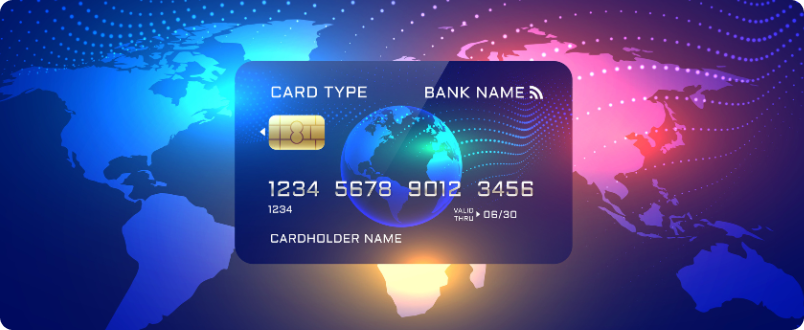Cross-border payments have long challenged businesses and financial institutions. Any business—big or small—can face difficulties optimizing the process, struggling with inefficiencies, high costs, and slow processing times. However, this challenge also presents a massive opportunity, with projections estimating that the global cross-border payments market will reach USD 290 trillion by 2030 (Foley & Lardner LLP). With rapid technological advancements, overcoming these challenges is now a matter of strategic implementation.

The nature of international transactions is undergoing a major transformation. The increasing demand for real-time payments, growing internet penetration, and complex regulatory landscapes have become critical factors influencing tech adoption. For businesses managing a high volume of domestic and international transactions daily, making the right choice of financial technology has never been more crucial.
Not long ago, sending payments across borders involved a complex network of intermediaries, banks, and lengthy processing delays. Costs associated with currency conversion, fees from multiple financial institutions, and settlement lags made cross-border payments cumbersome. In fact, global businesses incur over $120 billion annually in transaction costs, excluding foreign exchange fees. (Oliver Wyman)
Related Brochure: FinnAxia® Global Payments – Redefining the Future of Cross-border Transactions
However, with the right technology and partners, cross-border payments can now be faster, more cost-efficient, and highly secure.

What’s Shaping the Future of Cross-Border Payments?
Here are the key factors defining the future of cross-border payments:
1. Real-Time Payment Systems
The demand for instant settlements has led to the adoption of real-time payment systems, allowing businesses to send and receive funds instantly, no matter their location. Leading systems such as SWIFT, RTP networks, PAPSS (Pan-African Payment and Settlement System), and ASEAN Payment Connectivity are driving this change globally.
Notably, 92% of businesses anticipate significant investments in real-time payments within the next 24 to 36 months, further highlighting its increasing importance.
2. Multi-Currency Transactions
With businesses operating across multiple countries, processing payments in different currencies without delays or extra charges has become a key competitive advantage. Dynamic currency conversion enables smooth transactions internationally while reducing risks associated with currency fluctuations.
Additionally, the rise of CBDCs (Central Bank Digital Currencies) is set to revolutionize multi-currency transactions, reducing reliance on traditional networks like SWIFT. Major economies are actively testing digital currencies, such as China’s Digital Yuan, India’s pilot Digital Rupee, and the European Central Bank’s Digital Euro. (Foley & Lardner LLP)
3. Increased Transparency
Modern payment systems provide real-time tracking of transactions, allowing businesses to monitor their payments end-to-end. This visibility is essential for improving cash flow management and reducing disputes over delayed payments.
Furthermore, the adoption of the ISO 20022 messaging standard and SWIFT’s Unique End-to-End Transaction Reference (UETR) is enhancing collaboration, and reducing errors in international transactions.
4. Security at Every Step
As digital payments become more interconnected, transaction security is critical. Cyber threats, fraud, and data breaches have increased, prompting financial institutions to adopt AI-powered security measures.
A recent survey found that 77% of customers expect financial institutions to leverage AI to enhance fraud prevention in cross-border transactions. Multi-factor authentication (MFA), AI-based fraud detection, and AML (Anti-Money Laundering) protocols are becoming industry standards.
5. Regulatory Compliance
With each country enforcing different regulations for cross-border payments, compliance remains a key challenge. Banks and FinTechs must align with standards such as AML (Anti-Money Laundering), KYC (Know Your Customer), and GDPR (General Data Protection Regulation) while maintaining operational efficiency.
To simplify and standardize compliance globally, the ISO 20022 messaging standard is being widely adopted. This will help businesses and financial institutions reduce compliance-related errors and automate payment reconciliations.
6. Technology Advancements in Payments
Blockchain, DeFi, and Open Banking are revolutionizing cross-border transactions, enabling instant, low-cost settlements with improved security and transparency.
- Blockchain-powered smart contracts eliminate intermediaries in payments, reducing costs and delays.
- Stablecoins and decentralized finance (DeFi) platforms are turning up as reliable alternatives for international remittances.
- APIs enable seamless integration between banks, fintechs, and businesses, facilitating automated multi-currency payments and real-time FX rate access.
The rapid adoption of these technologies signals a shift toward a more efficient and scalable financial ecosystem.
Looking Ahead: The Global Opportunity
Cross-border payments are no longer an obstacle to global business expansion. Instead, they present an opportunity for companies to enhance efficiency, reduce costs, and build secure financial relationships across borders.

Explore Our Solution: FinnAxia® – Integrated Global Transaction Banking Platform
Currently, U.S. consumers and SMEs pay an estimated $17.9 billion annually in fees on international transactions, with 32% of these fees stemming from hidden exchange rate markups. (Papaya Global) The push for transparency, automation, and alternative payment models will be critical in reducing these costs.
As AI, digital currencies, and new payment networks continue to develop, businesses will gain access to faster, more cost-effective, and highly transparent financial solutions. For now, the focus remains on refining existing systems to meet growing demands while laying the groundwork for future innovations.
Key Takeaways
- The global cross-border payments market is projected to reach $290 trillion by 2030.
- Businesses spend over $120 billion annually in transaction costs.
- 92% of businesses are planning major investments in real-time payments.
- CBDCs like Digital Yuan and Digital Rupee are reshaping cross-border transactions.
- AI-based security solutions are becoming essential, with 77% of customers expecting AI-driven fraud prevention.
- The adoption of ISO 20022 and blockchain is driving transparency and cost reduction.
In Conclusion
Cross-border payments have evolved from slow, expensive, and opaque processes to near-instant, low-cost, and highly secure transactions. As businesses continue to expand globally, adapting to new technologies and regulations will be critical to staying competitive.
The future of global trade depends on frictionless financial transactions—and those who embrace these advancements will lead the next wave of economic growth.






 Lending
Lending
 Transaction Banking
Transaction Banking Financial Inclusion
Financial Inclusion




























